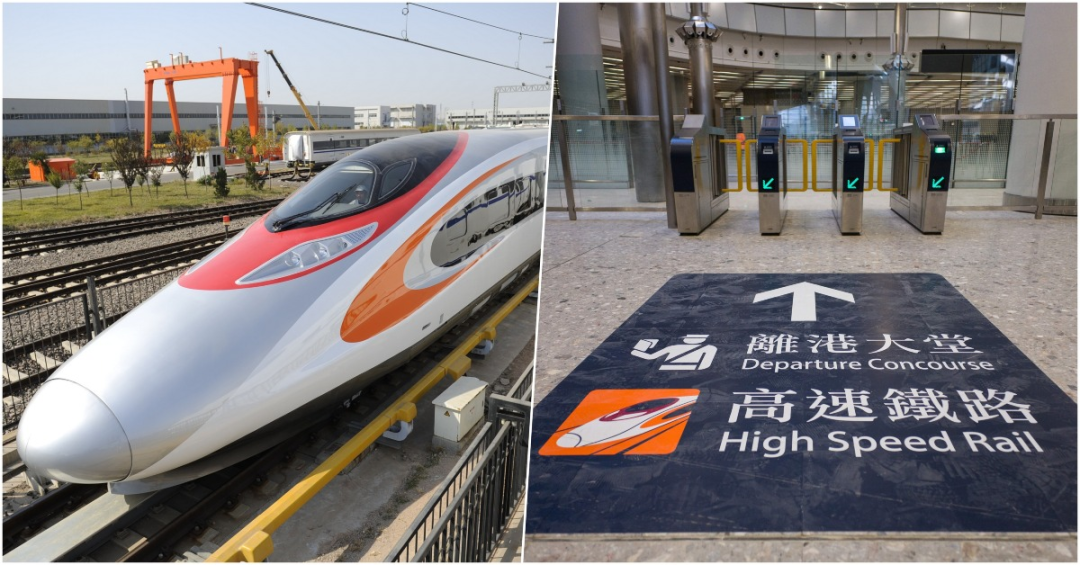
编者按
在中国稳健的宏观经济表现背后,广东及粤港澳大湾区有着怎样的改革实践措施?未来发展的可能性怎么样?如何吸引更多的优质青年人才?吉尔吉斯斯坦前总理卓奥玛尔特·奥托尔巴耶夫解读。
作者丨卓奥玛尔特·奥托尔巴耶夫
自大约45年前开始改革开放以来,中国的国内生产总值年均增长超过9%,8亿多人摆脱了贫困。同期,中国在教育、医疗保健和其他领域也取得了巨大进步,展现出中国的巨大潜力和经济韧性。在当前的全球经济语境中,世界仍在应对持续的疫情影响,同时,单边主义、保护主义以及地缘政治紧张局势对国际贸易和投资带来增加的不确定性。在此背景下,全球经济增长步履维艰。与此同时,中国正坚定不移地攻克难关,推进经济恢复与高质量发展的策略。2023年,中国国内生产总值(GDP)超过126万亿元,比上年增长5.2%,对世界经济增长贡献率有望超过30%。这一指标彰显了中国经济恢复的强劲势头,显示其向前发展的动力正变得愈发坚不可摧。另一方面,中国各地区通过实施积极的改革措施,如优化行政审批流程、推行市场准入的宽松政策、执行减税降费措施、加大金融支持力度及强化知识产权的保护,显著改善了商业运营环境。2023年,中国吸引外资1.1万亿元,这不仅凸显了外资对中国经济稳健基础的信心,也表明了其对中国持续增长潜力的坚定看好。
在中国稳健的宏观经济表现背后,区域发展策略发挥了关键作用,京津冀地区、长三角地区和粤港澳大湾区已经成为中国实现高质量发展的重要引领,特别是广东省及其作为经济创新高地的粤港澳大湾区,已经成为改革措施的先行示范区。在全国经济增长的大潮中,广东省依托其得天独厚的地理优势、强大的制造业基础和开放的经济体系,不仅有力地促进了区域的经济发展,同时提供了全国乃至全球经济增长的重要动力。在这一宏观背景下,我们将聚焦广东省,尤其是粤港澳大湾区过去和即将进行的改革实践,探讨其未来发展的可能性。
广东省与粤港澳大湾区是中国珠三角地带重要的一个区域,多年来在推动国家经济改革开放方面发挥了重要作用。广东省是创新的试验田,在这里成功地开展了经济改革。去年,习近平主席第四次出访广东,重点强调了广东对全国发展的重要性。他号召广东在推动中国式现代化建设中走在前列,因为广东是中国改革开放的“排头兵、先行地、实验区”。他还表示,希望外国投资者抓住机遇,“到中国来,到广东来,到粤港澳大湾区来”,继续探索与投资中国,深耕中国市场,创造企业发展新辉煌。
20世纪70年代末,中国政府在广东设立了第一个出口特区,主要由旅居海外的中国人出资。得益于香港卓越的港口物流、稳健的金融业和透明的立法,邻近的深圳直接获得了新的资金、技术和资源,使这座城市、这个省份乃至整个国家发生了翻天覆地的变化。果断引入市场机制的试验带来了惊人的成果,从1979年到2023年,深圳的GDP从1.96亿元人民币增长到3.461万亿元人民币(约合4810亿美元),增长了17000多倍,超过了香港和广州,这个曾经贫穷的渔村如今拥有着全国最高的人均GDP。
政府计划继续推进以大湾区为重点的改革,大湾区包括该省的九个主要城市以及香港和澳门特别行政区。尽管粤港澳大湾区占地面积不到中国国土面积的1%,人口仅占中国总人口的4%,但却为中国贡献了近10%的GDP。
中央政府已指示广东省地区领导加大力度将粤港澳大湾区打造成国际卓越的科技创新中心。为实现这一目标,广深港澳科技创新走廊应成为吸引跨境和区域人才、资金、信息、技术和大数据的强大磁石,由此为国际创新技术项目、科技活动以及有意建立研究机构和创新孵化中心的企业提供全面支持。
具体的高优先级项目包括位于深圳河套开发区的深港科技创新合作区项目,以及位于珠海开发区的横琴粤澳深度合作区。
政府计划加强粤港澳大湾区的互联互通,建设独具特色的交通基础设施,这是整合人口稠密的粤南、港、澳三地,将其打造为充满活力的经济中心的长期计划的一环。根据中国的“十四五”规划,到2025年,广东的铁路网将超过5000公里,投资超过1.6万亿元人民币。届时,粤港澳大湾区的铁路总长度预计将达到4700公里。
广州东站、广州火车站和广州南站之间将通过高铁连接起来,这些线路上的列车时速将达到200公里每小时,大大缩短了旅行时间。那时,从香港西九龙站到广州市中心将只需一个小时。
最近的一项调查显示,40%的香港受访者打算搬到大湾区内的其他城市居住或工作。专家预测,到2028年,该地区对办公空间的需求将达到约2100万平方米。粤港澳大湾区的成功整合将使其成为世界上独一无二、无可比拟的商业中心。
许多知名的高科技公司,如华为、腾讯和大疆,都在大湾区设立了总部,如高通、微软和英特尔等知名外企也在这里设立了研发中心或研究基地,这里现在被称为中国的硅谷。我们相信,该地区有可能成为美国硅谷的真正竞争对手。然而,要实现这一宏伟目标,还有许多工作要做。
大湾区吸引本地和国际人才的能力对于实现这一目标至关重要。为实现这一目标,必须将英语纳入各类平台的交流实践中,集中分配大量资源用于加强当地高校和实验室的科研能力,营造开放的交流环境,鼓励科学和文化交流,发展现代能源和交通基础设施,建立智能城市生态系统,这些都是能够吸引优质青年人才的重要标准。长期以来,美国加利福尼亚州一直是吸引全球年轻人的磁石,大湾区也可以而且应该利用同样的原则吸引人才,成为加州在世界范围内最有力的竞争者。
广东省以及粤港澳大湾区的突出成就,映射了中国在推进现代化进程和实现高质量发展方面的效率与速度,也反映了中国政府在促进经济高质量增长方面的坚定决心和自信。2024年,中国政府工作报告将“大力推进现代化产业体系建设,加快发展新质生产力”列为年度十大重点工作任务之首,这一举措凸显了中国政府对经济改革的高度重视,这一战略导向对于国家整体发展的成功具有决定性意义。
卓奥玛尔特·奥托尔巴耶夫是吉尔吉斯共和国前总理、北京师范大学一带一路学院教授,著有《新大国博弈阴影下的中亚经济重生》一书(Routledge,2023 年)。
附:来稿英文原文
China's Leap to Economic Recovery: Promoting high-quality development with comprehensive reforms
Since China began opening up and reforming its economy some 45 years ago, GDP growth has averaged more than 9 percent a year and more than 800 million people have moved out of poverty. During the same period there were also great improvements in education, health care, and other areas, demonstrating its enormous potential and economic resilience. In the current global economic context, the world is still coping with the impact of the ongoing epidemic, while unilateralism, protectionism, and geopolitical tensions have brought increased uncertainty to international trade and investment. Against this backdrop, global economic growth is struggling. Meanwhile, China is steadfastly overcoming obstacles and advancing its strategy of economic recovery and high-quality development. In 2023, China's GDP exceeded RMB 126 trillion, up 5.2% from the previous year, and its contribution to world economic growth is expected to exceed 30%. This highlights the strong momentum of China's economic recovery and shows that the drive for its development is becoming more and more irresistible. On the other hand, China's different regions have significantly improved the business environment through the implementation of proactive reform measures, such as optimizing the administrative approval process, pursuing liberal market access policies, implementing tax and fee reduction measures, increasing financial support, and strengthening the protection of intellectual property rights. In 2023, 1.1 Trillion yuan of foreign investment was attracted to China, which not only underscores foreign investment's confidence in the sound foundation of China's economy, but also demonstrates a firm bullishness on China's potential for continued growth.
Behind China's solid macroeconomic performance, regional development strategies have played a key role. The Beijing-Tianjin-Hebei region, the Yangtze River Delta (YRD) , and the Greater Bay Area(GBA) have become important leaders in China's efforts to achieve high-quality development. Guangdong Province and its GBA as a highland for economic innovation have in particular become the pilot demonstration zone for reforms. In possession of unique geographical advantages, strong manufacturing base and open economic system, the province has, in the tide of China’s national economic growth, not only contributed to the economic development of the region, but also provided an important impetus for national and global economic development. Under the circumstance, we will focus on the past and upcoming reforms in Guangdong Province and the Greater Bay Area, and explore the possibilities for its future development.
Guangdong Province along with the Greater Bay Area is an important part of China's Pearl River Delta (PRD). This region has been instrumental in driving the country's economic reforms and opening up for many years. The province is a testing ground for innovations and has successfully developed and implemented economic reforms.
The province's importance to the development of the entire country was emphasised when President Xi Jinping made his fourth trip to the province last year. He called on the province to lead in promoting Chinese modernisation, as it set the pace for the reform and opening up of the country. He also expressed his hope for foreign investors to increase their presence in Guangdong and the Greater Bay Area by continuing to explore and invest in the country.
During the late 1970s, Beijing established the first special export-oriented zones in the province, mainly financed by Chinese living abroad. Thanks to Hong Kong's exceptional port logistics, robust financial sector and transparent legislation, the nearby town of Shenzhen gained straight access to new funding, technology, and resources that transformed the city, the province, and the entire country beyond recognition. The experiment with the decisive introduction of market institutions brought stunning results. Between 1979 and 2023, Shenzhen's GDP grew more than 17 thousand times, from RMB 196 million to RMB 3.461 trillion (US$ 481 billion), surpassing the GDP of Hong Kong and Guangzhou. The once-poor fishing village now boasts the highest GDP per capita in the country.
The government plans to continue its reforms focusing on the Greater Bay Area, encompassing the province's nine major cities and the special administrative regions of Hong Kong and Macau. Despite covering less than 1 percent of China's land and housing only 4 percent of its population, the Bay Area contributes almost 10 percent to the nation's GDP.
The central government has instructed the regional leadership of Guangdong Province to put more effort into transforming the Greater Bay Area into an international centre of excellence for innovation and technology. The Guangzhou-Shenzhen-Hong Kong-Macao innovation and technology corridor should become a strong magnet for attracting cross-border and regional talent, capital, information, technology, and big data to achieve this goal. This initiative will provide comprehensive support to international innovation and technology projects, science and technology events, and businesses interested in establishing research institutes and incubation centres for innovation.
Specific and high-priority projects include the Shenzhen-Hong Kong Science, Technology and Innovation Project in Hetao, and near the Shenzhen Development Zone adjacent to Hong Kong, and the Guangdong-Macao Deep Cooperation Zone in Hengqing, which is located in the Zhuhai Development Zone.
The authorities plan to enhance connectivity and build unique transport infrastructure in the Greater Bay Area. It is part of a long-term plan to integrate the densely populated south of Guangdong, Hong Kong, and Macau to transform it into a dynamic economic centre. According to China's 14th Five-Year Plan, Guangdong's railway network will surpass 5,000 km by 2025 with more than 1.6 trillion RMB investment. With that, the Greater Bay Area is expected to have a total length of railway tracks reaching 4,700 km.
A transportation link will connect Guangzhou East Railway Station, Guangzhou Railway Station and Guangzhou South Railway Station through high-speed highways. Trains on these routes will reach 200 km/h speeds, significantly reducing travel time. It will take just one hour to travel from Hong Kong's West Kowloon Station to downtown Guangzhou.
A recent survey has revealed that 40 percent of respondents from Hong Kong intend to relocate or work in other cities within the Greater Bay Area. Experts predict that by 2028, the demand for office space in the region will reach around 21 million square meters. The territory's successful integration will transform it into a unique business hub with no equivalent anywhere in the world.
Many well-known high-tech companies, such as Huawei, Tencent, and DJI, have headquarters in the Greater Bay Area, now called China's Silicon Valley. Famous foreign companies such as Qualcomm, Microsoft and Intel have also set up R&D centers or research bases here. We believe the region can potentially become a real competitor to California's Silicon Valley. However, much more work must be done to achieve this ambitious goal.
The area's ability to attract local and international talent is crucial in achieving this. To accomplish this goal, it is vital to incorporate the English language into communication practices across all platforms, allocate significant resources towards strengthening the scientific and research capabilities of local universities and laboratories, foster an environment of open exchange, encourage scientific and cultural exchanges, develop modern energy and transport infrastructure, and establish smart city ecosystems. These are mandatory criteria for attracting capable youth. California has long been a magnet for young people worldwide, and the Greater Bay Area can and should become its most serious competitor by using the same principles to attract talent.
The outstanding achievements of Guangdong Province and the Greater Bay Area map the efficiency and speed of China's modernization and high-quality development, and reflect the Chinese government's strong determination and confidence in promoting its high-quality economic growth. China’s 2024 Report on the Work of the Government listed "striving to modernize the industrial system and developing new quality productive forces at a faster pace" as the first of the year's ten key tasks. This is a move that underlines the great importance that the Chinese government attaches to economic reforms, and a strategic direction that will be decisive for the success of the country's overall development.
Djoomart Otorbaev is a former Prime Minister of the Kyrgyz Republic, a professor of the Belt and Road School of Beijing Normal University, and the author of the book "Central Asia's Economic Rebirth in the Shadow of the New Great Game"(Routledge, 2023).



